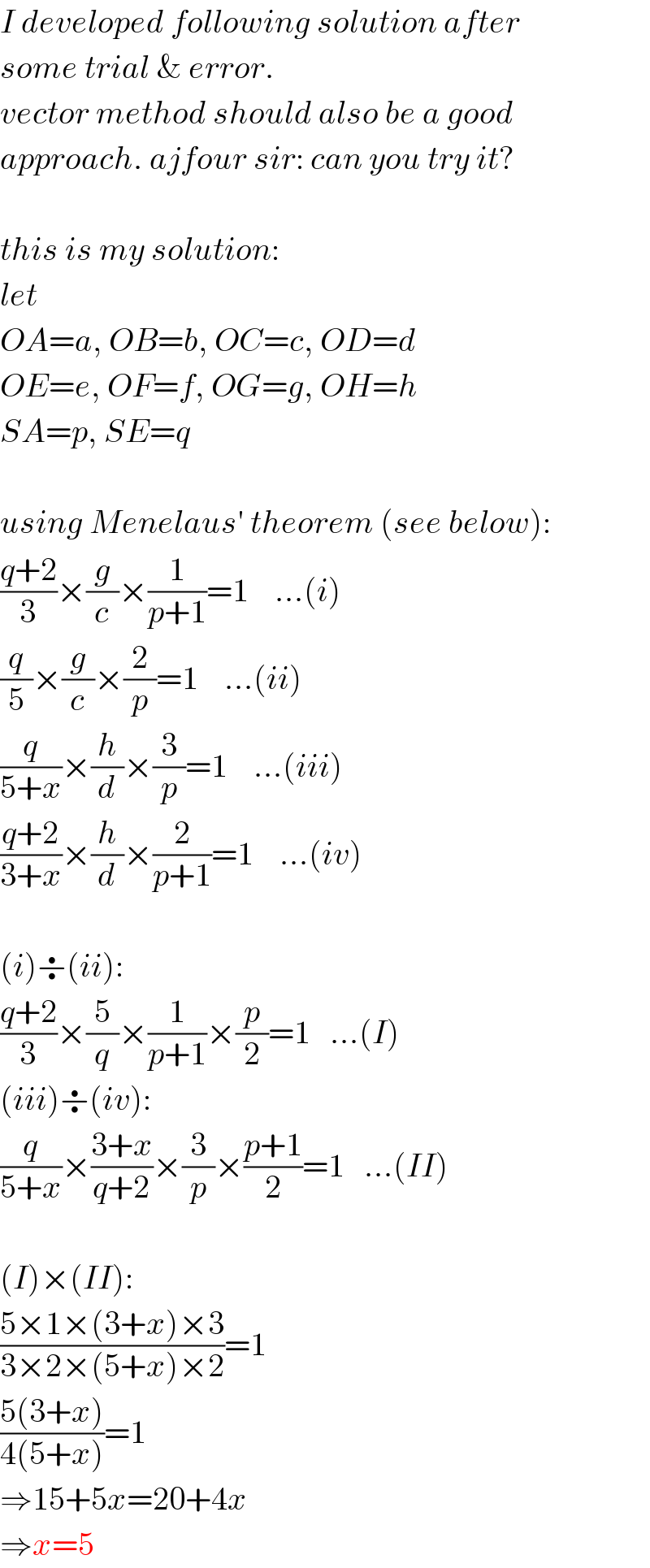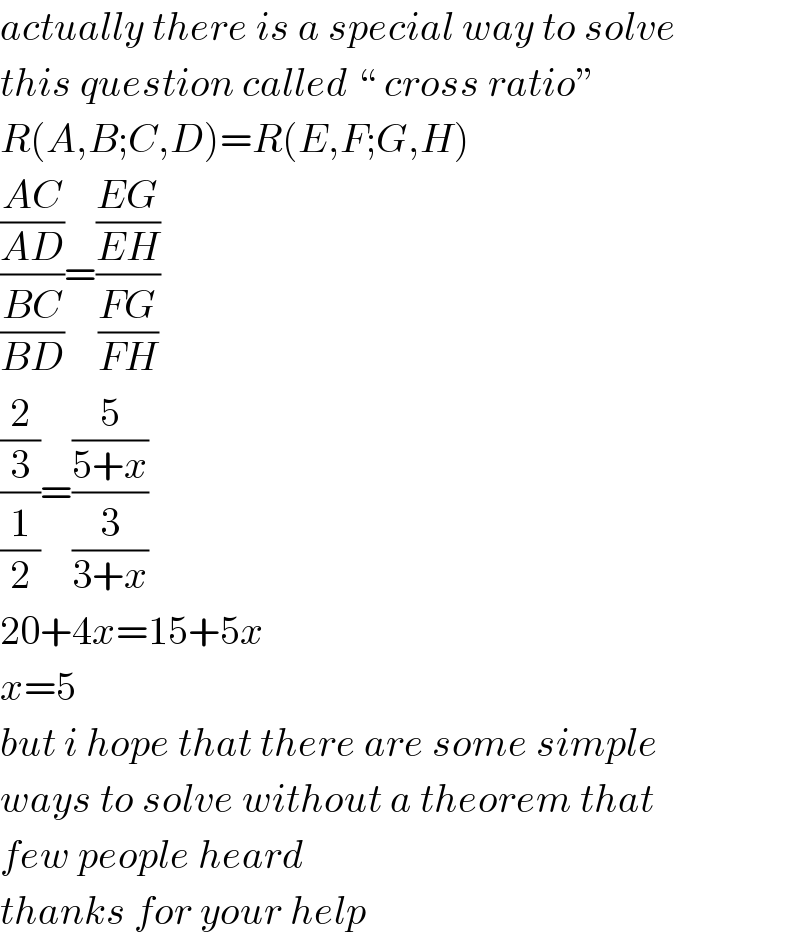
Question and Answers Forum
Question Number 65491 by mr W last updated on 30/Jul/19

Commented by mr W last updated on 30/Jul/19
![[Q65312 reposted] find x=?](Q65493.png)
Answered by mr W last updated on 30/Jul/19

Commented by mr W last updated on 30/Jul/19

Commented by mr W last updated on 30/Jul/19

Commented by MJS last updated on 31/Jul/19

Commented by Tony Lin last updated on 31/Jul/19

Commented by Tony Lin last updated on 31/Jul/19

Commented by Tony Lin last updated on 31/Jul/19

Commented by Tony Lin last updated on 31/Jul/19
![without loss of generality ⇒using coordinate-system hypothesis let O(0,0),A(0,−s),B(1,−s),C(2,−s) D(3,−s),E(0,−t),F((6/5),−t−(8/5)) G(3,−t−4),H(x,y) O,B,F are collinear ⇒t+(8/5)=(6/5)s O,C,G are collinear ⇒t+4=(3/2)s ⇒ { ((t+(8/5)=(6/5)s)),((t+4=(3/2)s)) :} ⇒(t,s)=(8,8) ∵H is the point of intersection of L_(OD) &L_(EG) ∴ { ((y=((−8)/3)x)),((y=((−4)/3)x−8)) :} ⇒(x,y)=(6,−16) GH=(√((6−3)^2 +[−16−(−12)]^2 ))=5 i only think of this idea now](Q65540.png)
Commented by MJS last updated on 31/Jul/19

Commented by mr W last updated on 31/Jul/19

